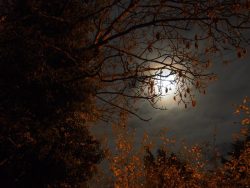Halloween History 101: Understanding the Roots of This Spooktacular Holiday
Halloween, a holiday celebrated with pumpkin carving, trick-or-treating, and spooky costumes, has a fascinating history that dates back thousands of years. Its origins are rooted in the ancient Celtic festival of Samhain (pronounced “SAH-win”), a pagan celebration that marked the end of the harvest season and the onset of winter.
During this time, communities would light bonfires and wear costumes to protect themselves from roaming spirits believed to return to Earth.
Evolution of Halloween Traditions
In the eighth century, Pope Gregory III designated November 1 as a day to honor saints, known as All Saints Day. This shift was significant, as it integrated some of the traditions of Samhain into Christian practices.
The night before All Saints Day became known as All Hallows Eve, which eventually transformed into the modern term “Halloween.”
The transition from Samhain to Halloween brought various customs along with it. The act of wearing costumes was originally intended to disguise oneself from malevolent spirits, while the tradition of lighting bonfires symbolized the light that guided souls back to their resting places.
Modern Halloween Celebrations
Today, Halloween is celebrated in various ways around the world. In the United States, the tradition of trick-or-treating emerged in the early 20th century and has become a hallmark of the holiday.
Children dress in costumes and go door-to-door, collecting candy and treats from neighbors. Meanwhile, pumpkin carving, which originated from the practice of creating jack-o’-lanterns from turnips, has become a beloved activity, symbolizing the Halloween spirit.
As Halloween continues to evolve, it remains a time for communities to come together in celebration, honoring both ancient traditions and contemporary practices.
Understanding the rich history behind Halloween not only deepens our appreciation for the holiday but also connects us to centuries of cultural heritage.






























